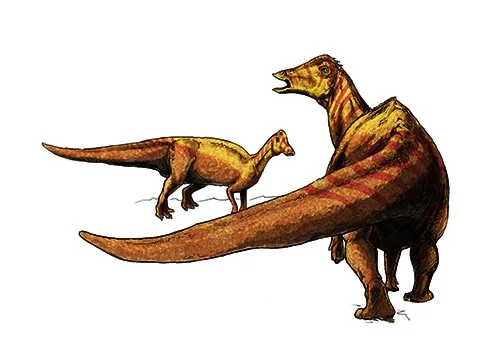Nipponosaurus (Japanese lizard)

Nip-pon-o-sore-us
Takumi Nagao - 1936
Herbivore
Estimated 6-7 meters long
Euornithopod
N. sachalinensis (type)
Russia, Sakhalin
Late Cretaceous, 72-68 million years ago
Nipponosaurus Facts
Nipponosaurus was a genus of herbivorous dinosaur that lived during the Late Cretaceous period, approximately 72-68 million years ago. Its fossils were first discovered in Japan, from which it derives its name.
The Japanese lizard was a relatively small hadrosaurid, measuring around 6-7 meters (20-23 feet) in length and weighing around 1 ton. It had a distinctive, elongated skull with a toothless beak and rows of dental batteries in its cheeks that it likely used to grind up tough vegetation.
One of the most distinctive features of Nipponosaurus was the pair of hollow, dome-shaped crests on top of its skull. These crests may have served a variety of functions, including display, communication, or thermoregulation.
Nipponosaurus is known from several partial skeletons and isolated bones, which have provided valuable information about its anatomy and behavior. For example, its fossils suggest that it was a fast and agile dinosaur, capable of moving on two or four legs depending on the situation.
In conclusion, Nipponosaurus was a unique and interesting dinosaur that lived during the Late Cretaceous period in what is now Japan. Its elongated skull, toothless beak, and rows of dental batteries are characteristic of the hadrosaurids, a diverse group of herbivorous dinosaurs that thrived during the Late Cretaceous. The study of dinosaurs like Nipponosaurus helps us to better understand the diversity of life that existed on Earth millions of years ago, and the important role that paleontology plays in uncovering and understanding this history.



